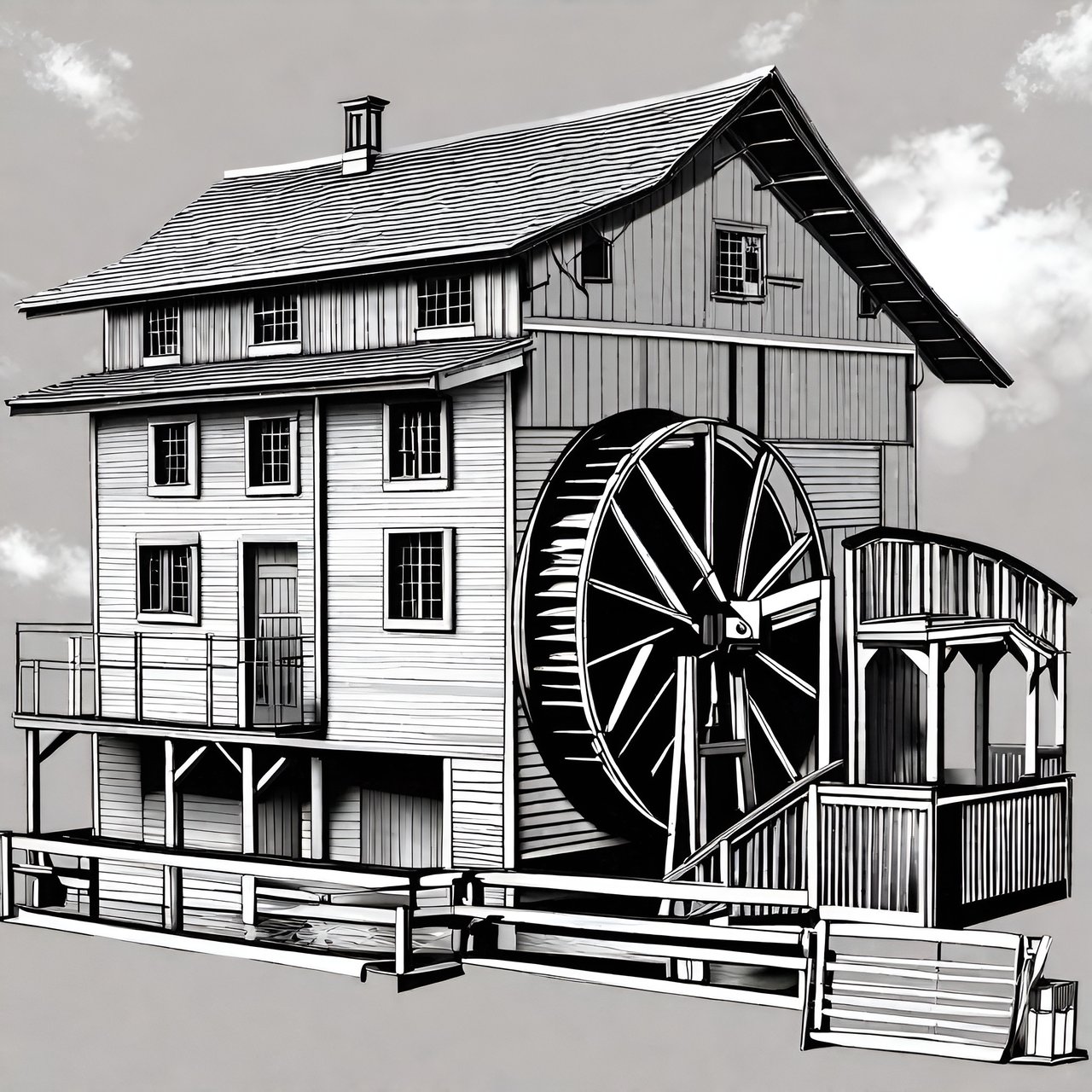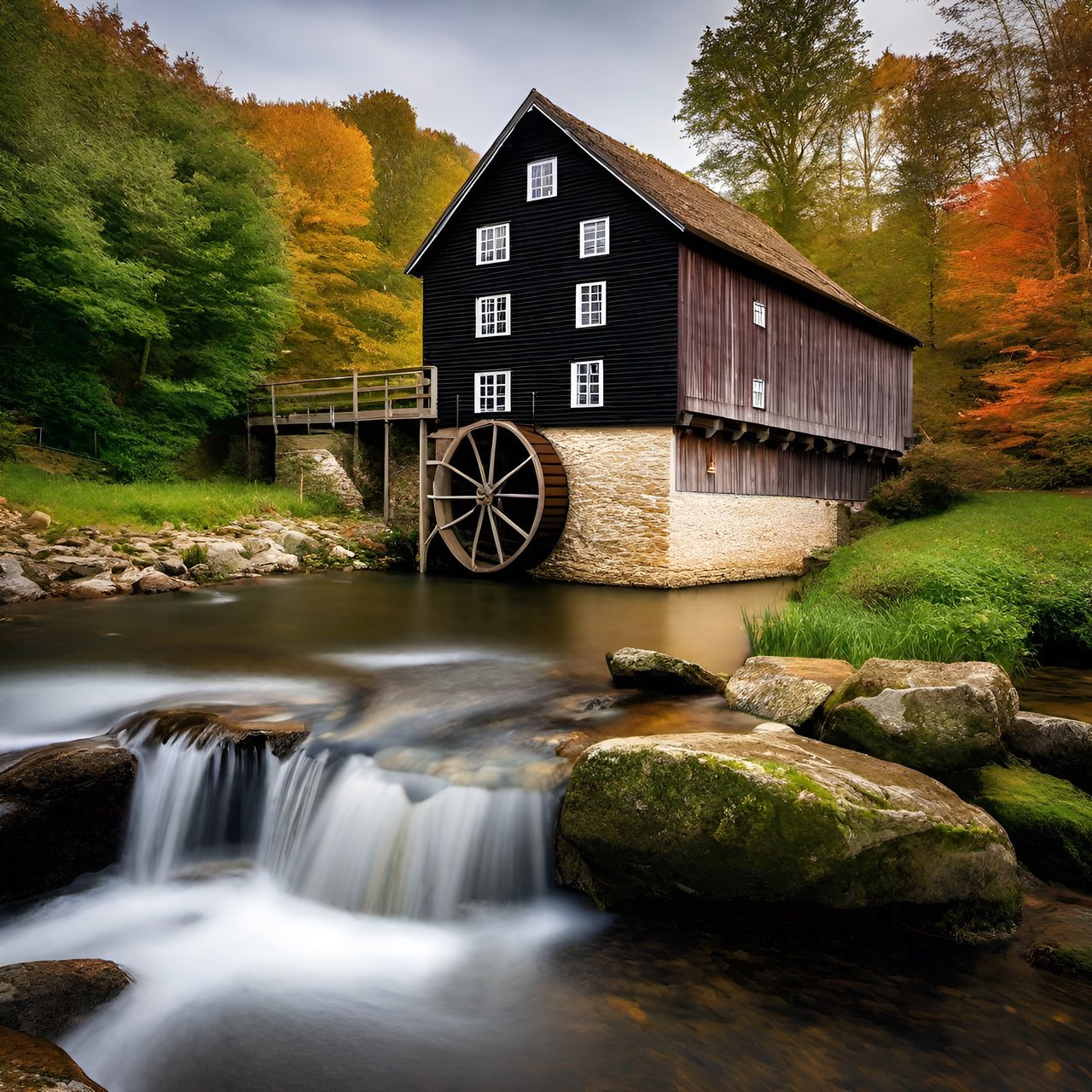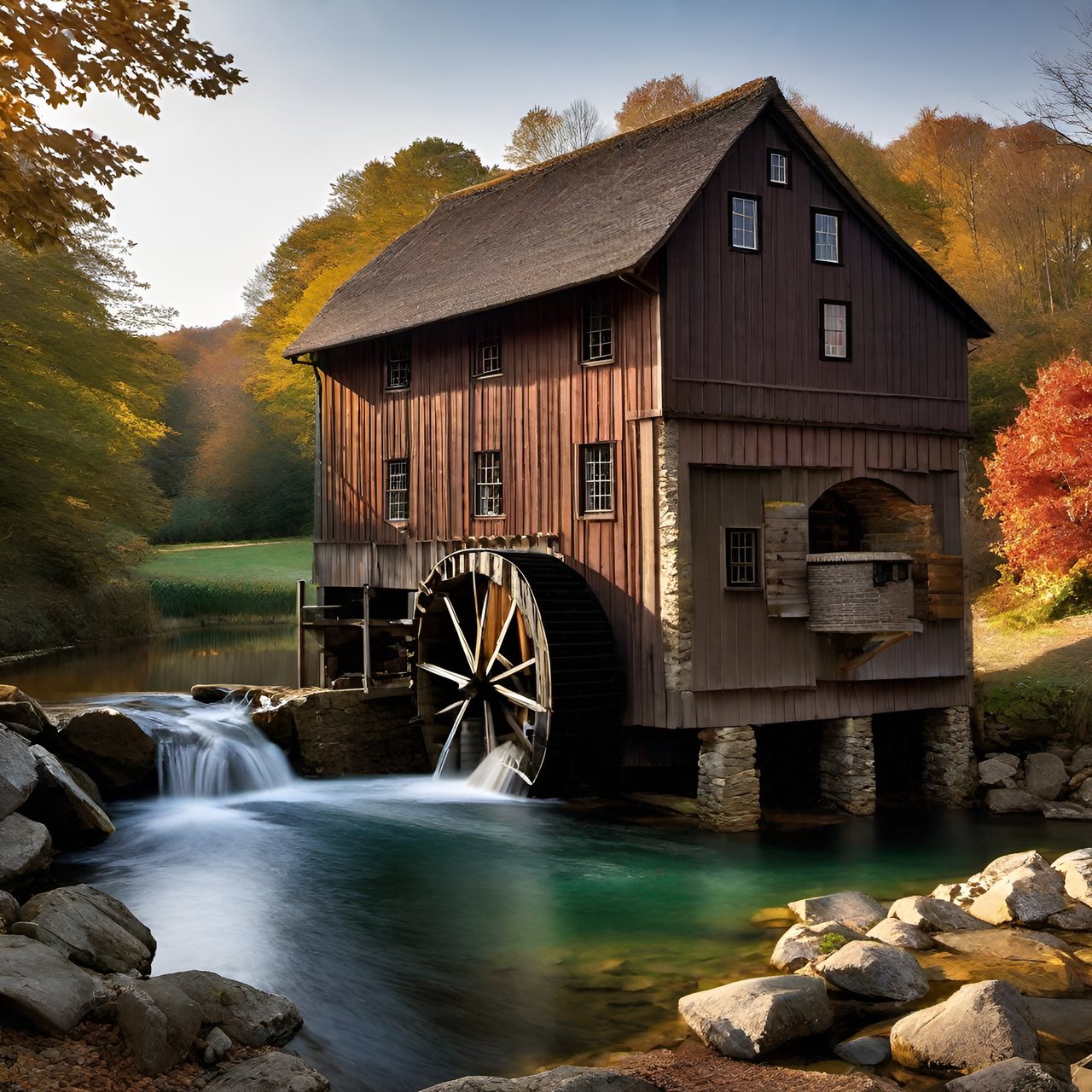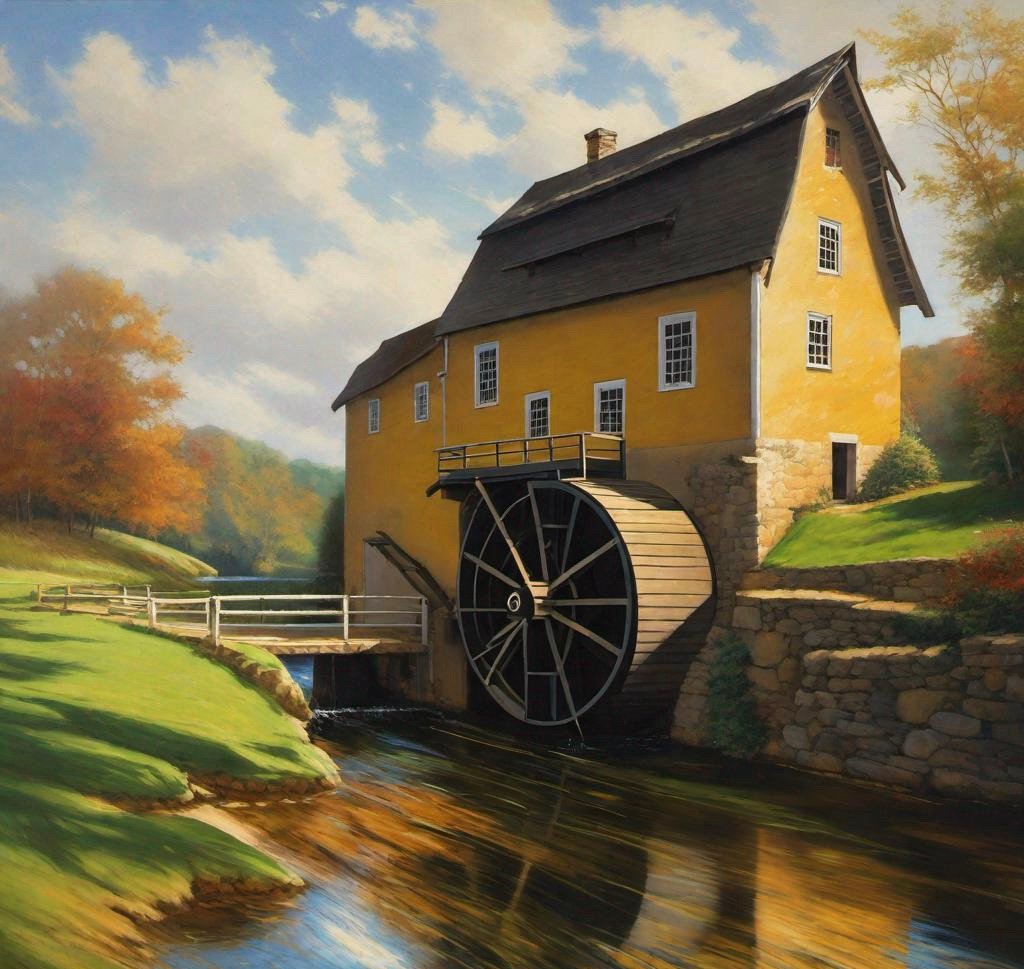The history of Hammermills
10 comments
Hey dear Hive community, first of all I would like to welcome you to my new post and hope you had a day full of positive experiences and a great weekend! In this post, I would like to discuss an interesting historical topic and hope you can learn something new.
I have created these pictures with the help of artificial intelligence and in this post I would like to bring you closer to an interesting type of mill, which is also known as Hammermill. In this type of mill, the blacksmiths and the mills combine and in this type is working with a hammer that is operated with the help of a water wheel and the first traces can already be found over 1500 years ago and in the 14th Century it was spread more and more. Often these mills were placed on streams or rivers and at that time it was primarily about processing ore with the help of the hammer and therefore it was often placed in mountain regions near mining areas. This type of technology has greatly simplified this work and poople no longer had to process the whole ore by hand and then the ore was freed from clay or other impurities in several washing operations and the crushed ore was also better for further transport and this innovation has also improved trade. There were mostly more people working in this mill and some brought the ore and in addition you needed some assistants who were responsible for working with the hammer, several people who were responsible for washing the ore and of course you needed another one who supervised all the work and organized everything. You also needed employees who were responsible for melting the ore and operated the oven and in addition you needed workers who must check the quality of the ore and of course the further transport had also to be organized.
For trade, middlemen usually came into play who brought the ore to a central trading place from where further transport has been regulated and, depending on the size of the mill, 10-70 people worked there. Of course, it was also of great importance that you had enough resources such as charcoal and to operate the stove and of course the location had to be relatively well located in order to be able to reach all important goals as quickly as possible and you can see how well organized and formative the hammer millswere. Inside the buildings there is usually a melting furnace and of course the necessary tools of the forgings and owners of these mills quickly came to a high reputation due to the technical advances and over time more and more of these mills were created. Also for the general processing of metal, this mill was very important in the late Middle Ages and has greatly improved the work of many blacksmiths, but it was also used for agricultural purposes to process grain. In particular, it has improved the work of the nail, horseshoes or weaponsmiths, which could now work much faster and depending on the location, the Hammermills had one or more wheels which were connected with a hammer and as a base was an anvil. The blacksmiths were able to work much faster and ensure that weapons, armor, horseshoes, nails and other objects arrived quickly at their destination and to this day you can see many traces of the hammermills and the importance for production and infrastructure and in the 19th century century, this technique was changed more and more by the invention of the steamroller. If you want to learn more about the history of the mills and blackmsiths, you will find articles on the topic
as well as and I think it's great to see how two formative branches unite here.Many thanks for taking the time to read through my post and I hope you like it and can learn something new about history!








Comments